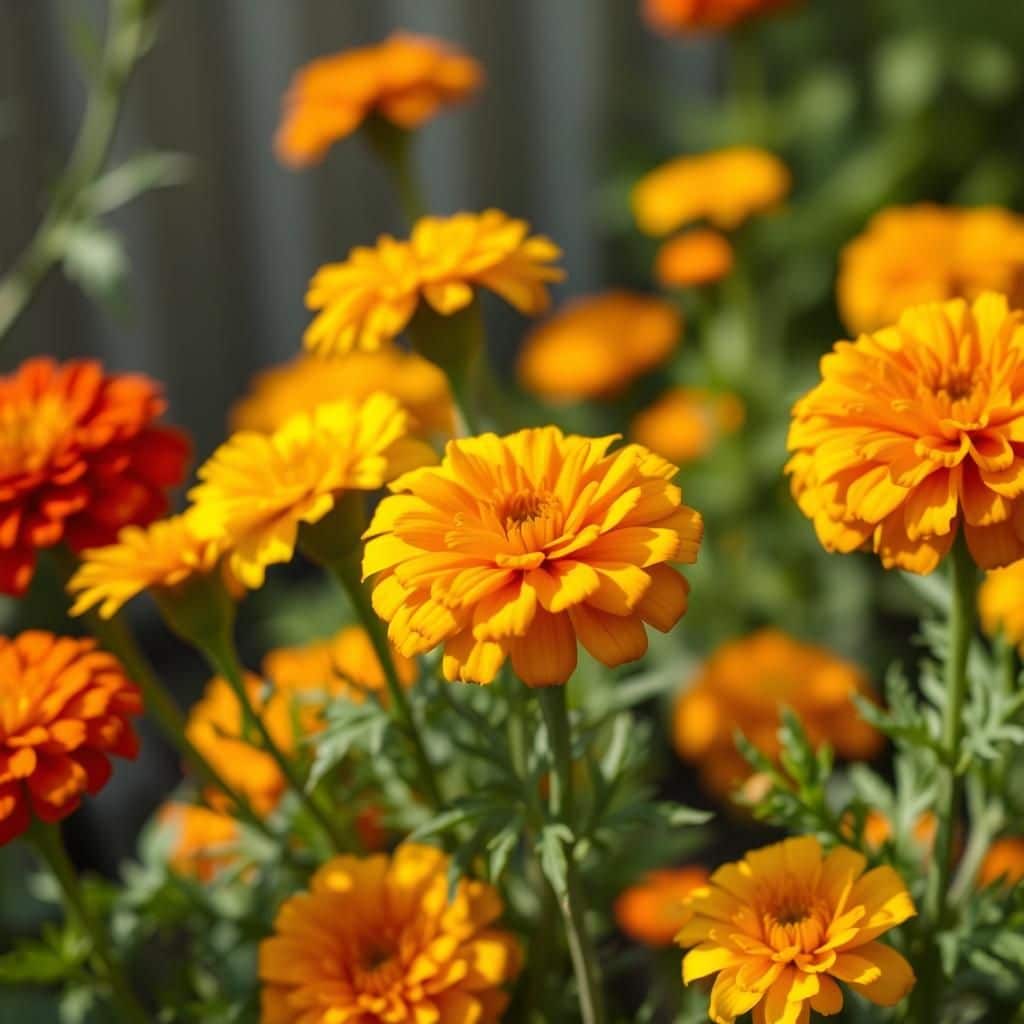Do Marigolds Like Full Sun? Tips for Growing Vibrant Marigolds in Your Garden

Marigolds are beloved for their vibrant colors and resilience, making them a popular choice for gardens around the world. One common question among gardeners is whether these cheerful flowers thrive best in full sun. Understanding their sunlight requirements is crucial for ensuring a flourishing garden display. In this article, we will explore the ideal growing conditions for marigolds, tips for maximizing their growth, and how to ensure they remain healthy and vibrant throughout the blooming season. By the end, you'll be equipped with all the knowledge needed to cultivate stunning marigolds that will brighten your outdoor space.
Do Marigolds Prefer Full Sun?
Marigolds are sun-loving plants that thrive best in full sun conditions. They require at least six hours of direct sunlight each day to flourish and reach their full potential in terms of growth and blooming. While they can tolerate some shade, prolonged exposure to low light conditions may lead to leggy growth and fewer flowers. By providing marigolds with optimal sunlight, gardeners can ensure vibrant blooms and robust health, making them a popular choice for flower beds and borders.
Benefits of Full Sun for Marigolds
Marigolds benefit from exposure to full sun as it enhances their photosynthesis process, leading to stronger growth and abundant flowering. When planted in areas where they receive ample sunlight, marigolds develop vivid colors and sturdy stems. This optimal light condition also helps prevent some pests and diseases, as many pathogens thrive in shaded environments.
Signs of Insufficient Sunlight
When marigolds do not receive enough sunlight, they may exhibit several signs of distress. These include stunted growth, faded flower colors, and elongated stems that appear weak and leggy. Affected marigolds may produce fewer blooms and may be more susceptible to pests and diseases, as they lack the vigor that strong sunlight provides.
Optimal Growing Conditions
To ensure marigolds thrive, they should be planted in well-draining soil that is rich in nutrients and receives full sun. Ideally, a location that gets at least six to eight hours of direct sunlight daily will maximize their growth potential. Additionally, regular watering and fertilization can help improve their resilience and blooming throughout the growing season.
See also:
Companion Planting with Marigolds
Marigolds are often used in companion planting strategies due to their ability to thrive in full sun and repel certain pests. When planted alongside vegetables and other flowers, marigolds can deter nematodes and aphids, benefiting the overall health of the garden. Their bright flowers also attract beneficial insects, such as pollinators, which can enhance the productivity of nearby plants.
Seasonal Care for Marigolds
Providing seasonal care for marigolds is essential for maintaining their health and visual appeal. During warmer months, ensure they receive enough water while avoiding waterlogging. In the fall, as temperatures begin to drop, marigolds may start to decline; it is crucial to monitor sunlight exposure and consider bringing potted marigolds inside or covering those planted outdoors if frost is expected.
| Aspects | Full Sun | Partial Shade |
|---|---|---|
| Growth Rate | Fast | Slow |
| Flower Production | Abundant | Limited |
| Vigor | Strong | Weak |
| Pest Resistance | High | Low |
| Ideal Soil Conditions | Well-drained, nutrient-rich | Compacted, possibly nutrient-poor |
Understanding the Sun Requirements for Marigolds
Marigolds thrive in full sun, which generally means they require at least six hours of direct sunlight each day. This abundant sunlight promotes healthy growth, encouraging the production of vibrant flowers that can bring color to any garden. When planted in well-drained soil with plenty of nutrients, marigolds can truly flourish under these sun conditions. Insufficient sunlight may lead to leggy growth and reduced blooming, so it’s essential to carefully select a planting site that meets these sun exposure requirements to achieve the best results.
Optimal Soil Conditions for Marigolds
Marigolds prefer well-draining soil that is rich in organic matter. Incorporating compost can significantly improve soil texture and nutrient availability, promoting robust root development. Additionally, these flowers do well in slightly acidic to neutral pH levels, between 6.0 and 7.0. Ensuring the right soil conditions not only enhances marigold health but also supports their growth in full sun environments, leading to more vibrant blooms.
Watering Tips for Sun-Loving Marigolds
When growing marigolds in full sun, it’s crucial to establish a consistent watering schedule. These plants prefer their soil to be moist but not soggy, so watering deeply once or twice a week allows the roots to absorb necessary moisture while preventing root rot. During particularly hot or dry spells, additional watering might be necessary to keep the soil from becoming too dry, ensuring the marigolds can maintain their bright colors and overall vitality.
See also:
Companion Planting with Marigolds
Marigolds are excellent companion plants in the garden, especially when planted alongside vegetables and herbs. They are known to repel pests like aphids and nematodes, making them beneficial for crops like tomatoes and peppers. By cultivating marigolds in full sun with compatible plants, garden health can be improved through natural pest control, which can also encourage a more flourishing and vibrant garden space.
Propagating Marigolds for a Lush Garden
Whether you are starting from seeds or cuttings, propagating marigolds is a rewarding process for any gardener. The seeds can be sown directly into the soil in spring after the last frost, ensuring they receive adequate sun exposure. Starting seeds indoors can also be effective; just remember to provide plenty of light to prevent weak, spindly growth. Ensuring that young plants are acclimated to full sun before transplanting will help them thrive in the garden.
Common Pests and Diseases Affecting Marigolds
Even though marigolds are relatively pest-resistant, they can still be affected by common garden pests like aphids and spider mites. Regularly inspecting plants for signs of infestation can help mitigate damage. Moreover, practices like crop rotation and maintaining air circulation can prevent diseases such as powdery mildew. Ensuring good garden hygiene and understanding pest behaviors can significantly contribute to the healthy growth of your marigolds in full sun environments.
Questions from Our Readers
Do marigolds prefer full sun?
Marigolds absolutely thrive in full sun conditions, requiring at least 6 to 8 hours of direct sunlight each day. This exposure helps them grow vigorously and bloom profusely, making them an ideal choice for sunny gardens.
Can marigolds survive in partial shade?
While marigolds can tolerate partial shade, their growth and flowering may be limited. They perform best with ample sunlight, so planting them in shadier areas may result in diminished blooms and weaker plants.
See also:
What are the benefits of growing marigolds in full sun?
Growing marigolds in full sun not only promotes vibrant colors but also boosts their resilience against pests and diseases. Healthy plants in sunny locations are generally more robust and have a longer blooming season.
How can I tell if my marigolds are getting enough sun?
Signs that marigolds are not receiving enough sun include leggy growth, small or few flowers, and a generally weak appearance. If you notice these symptoms, consider relocating them to a sunnier spot to enhance their growth and flowering potential.

If you want to read more articles like Do Marigolds Like Full Sun? Tips for Growing Vibrant Marigolds in Your Garden, we recommend you check out our Flowers category.
Leave a Reply
Related Articles